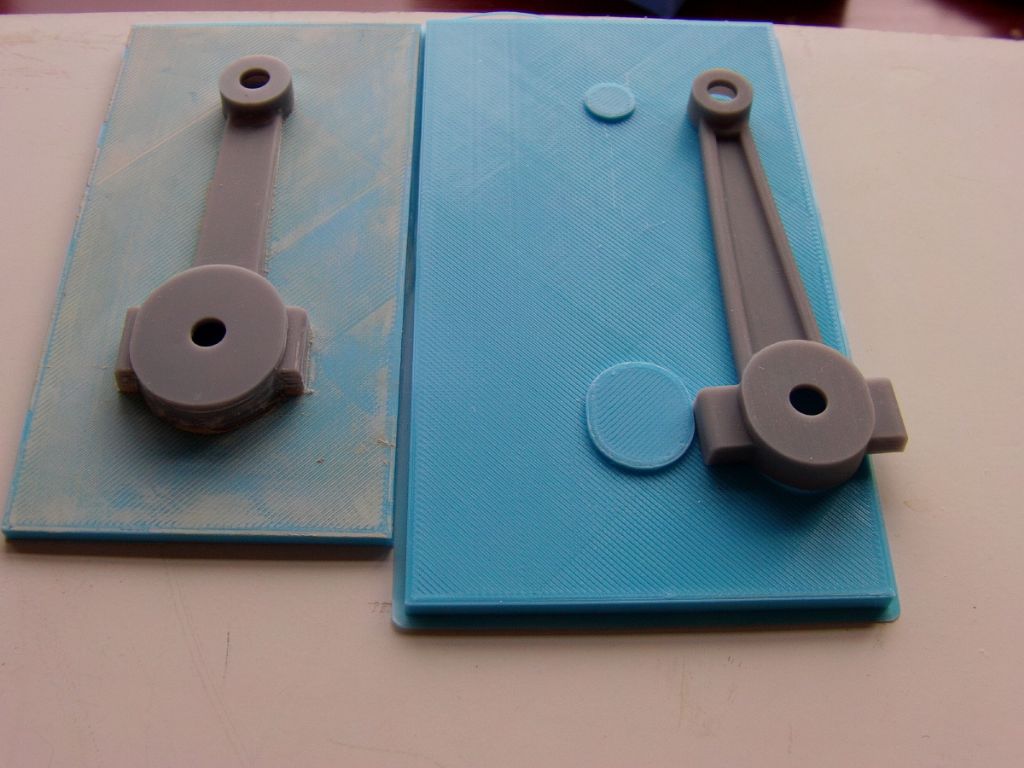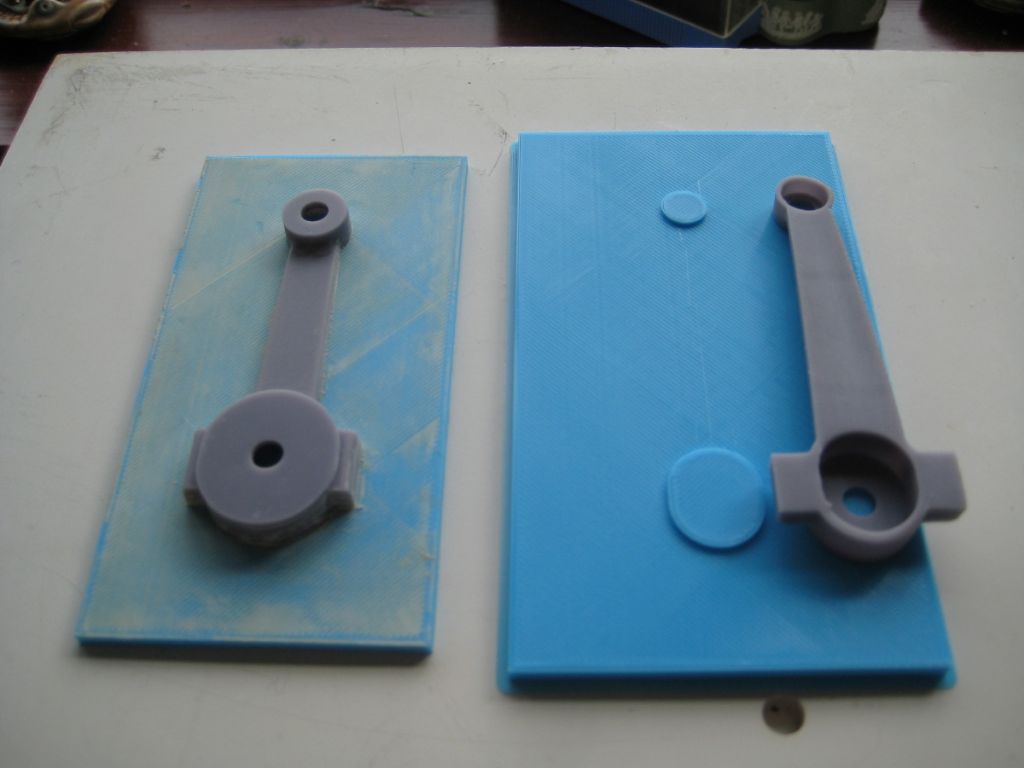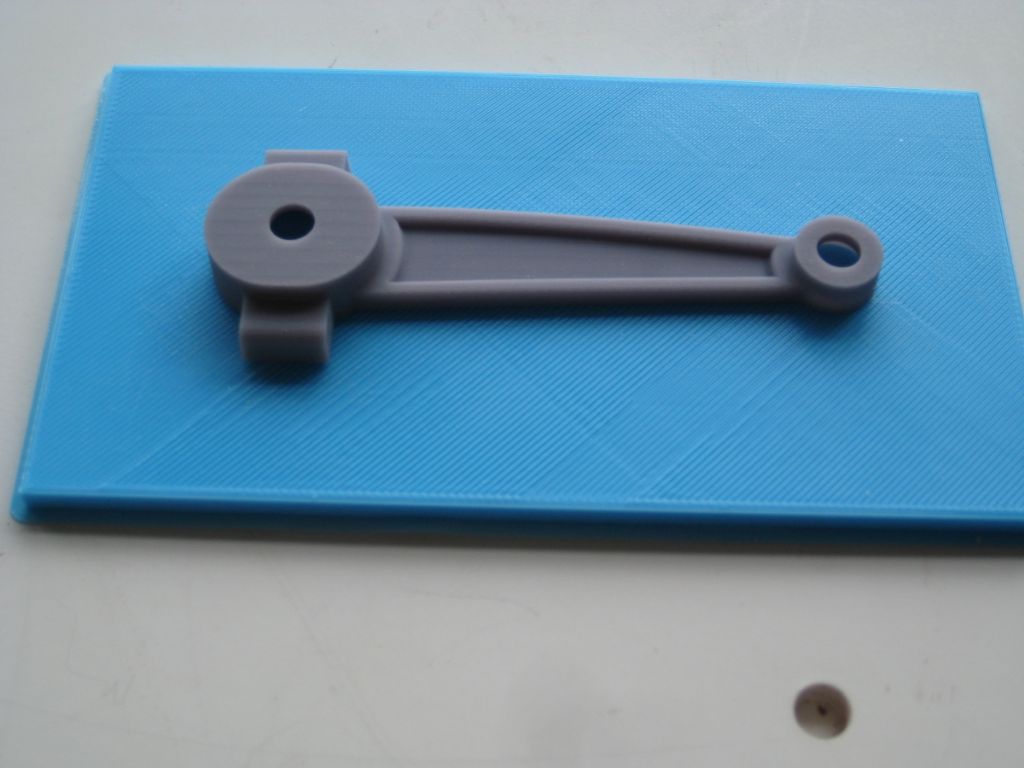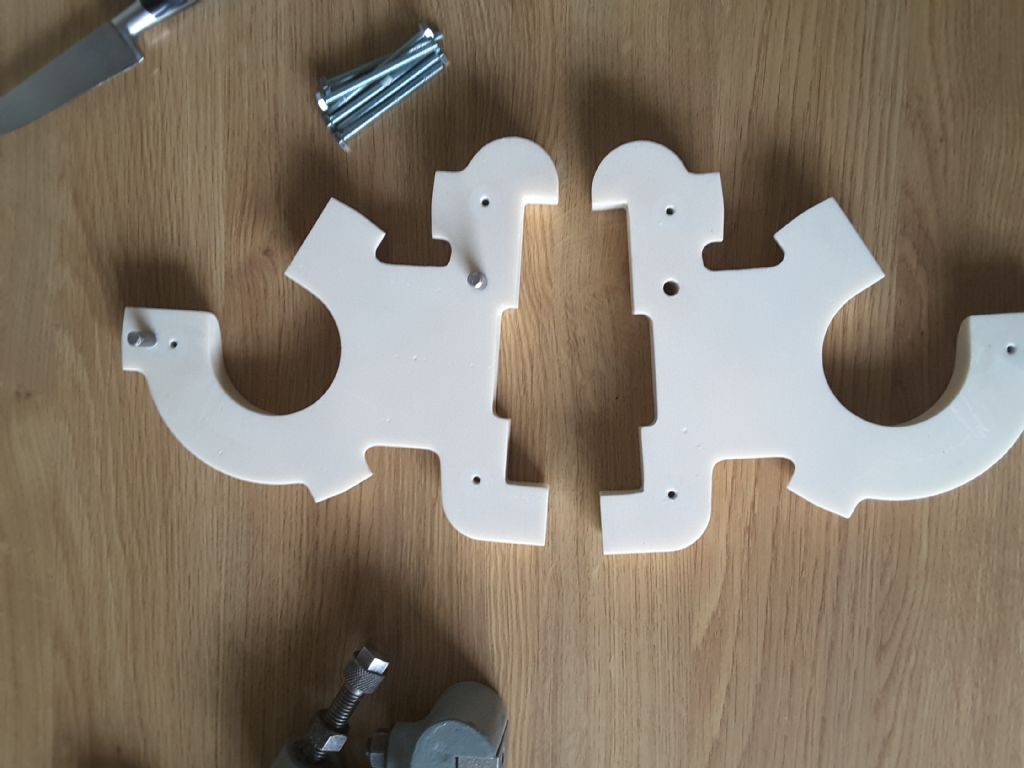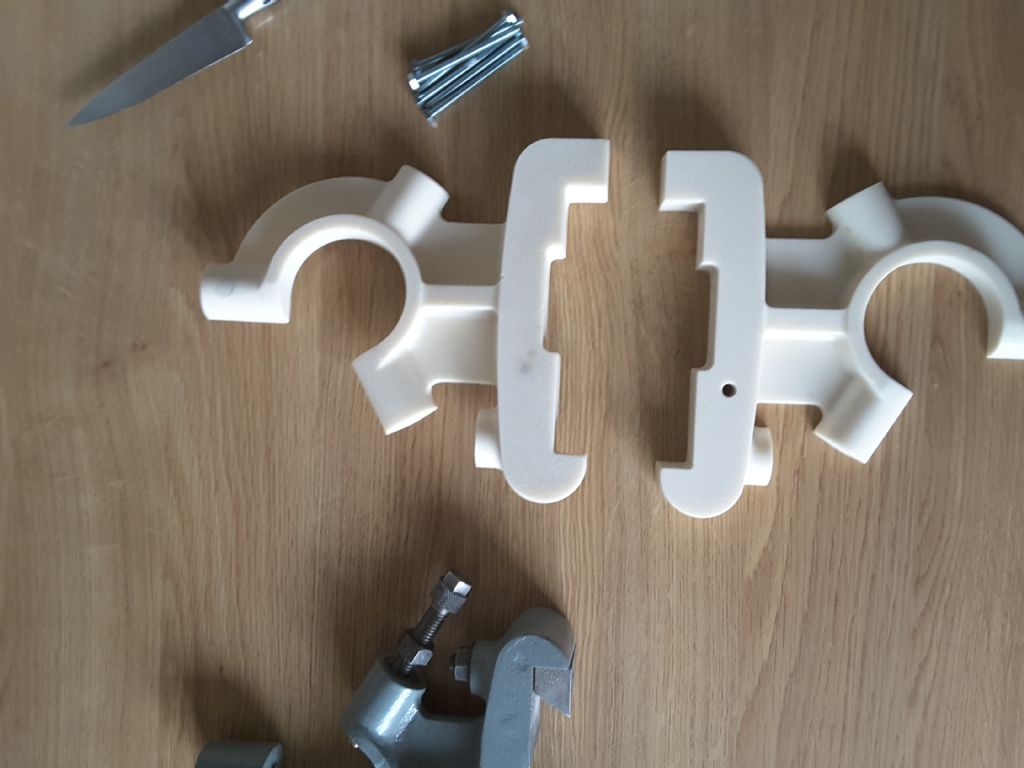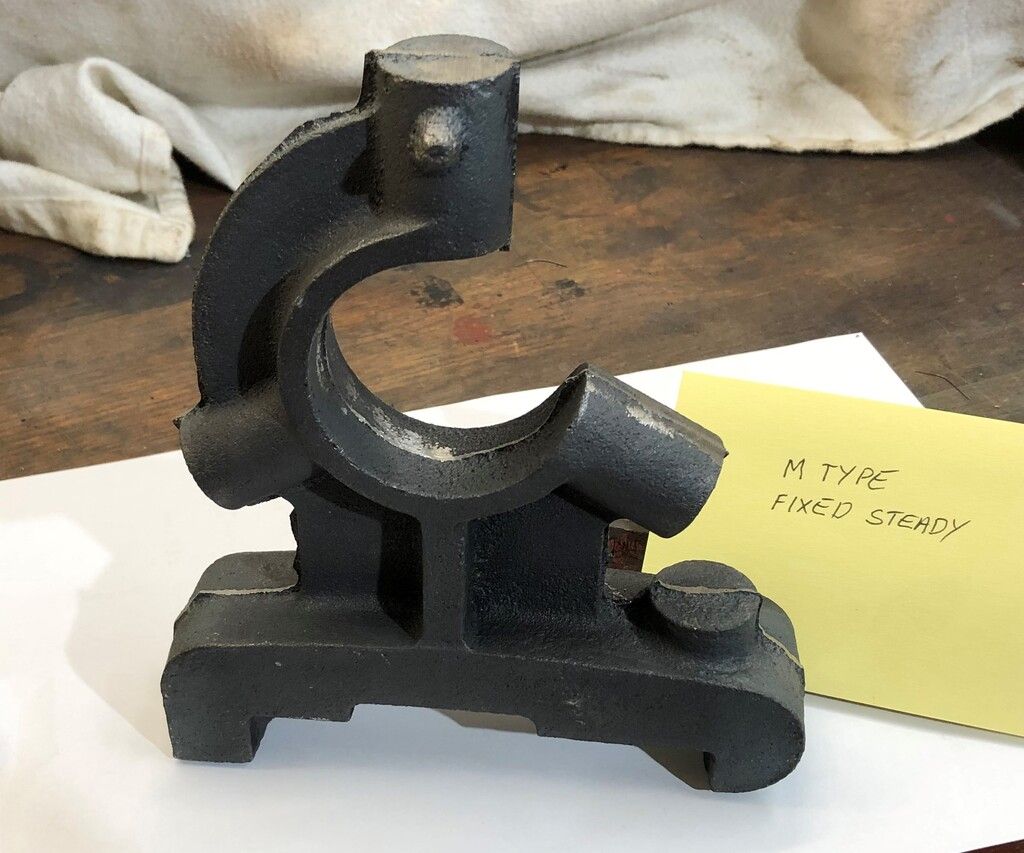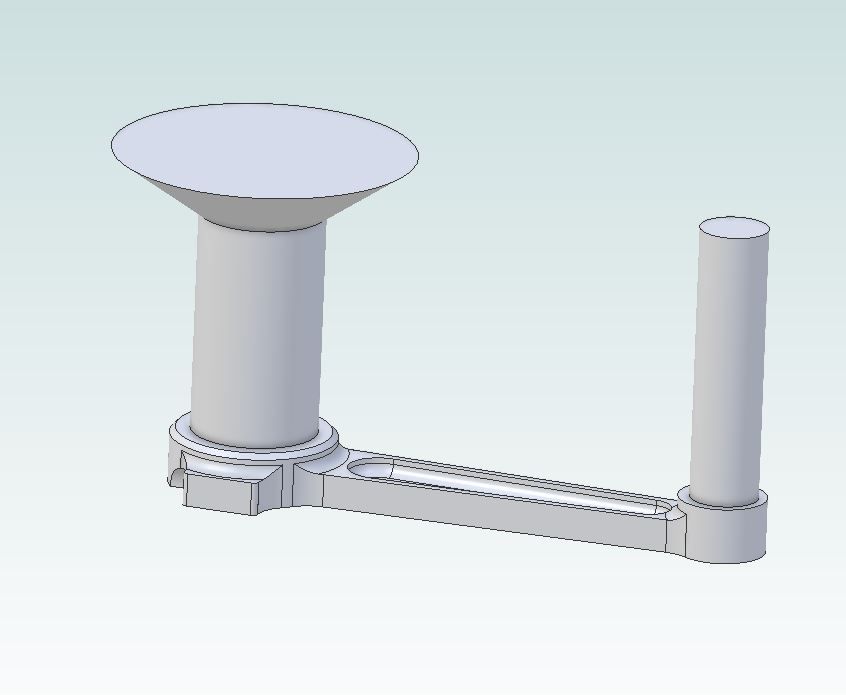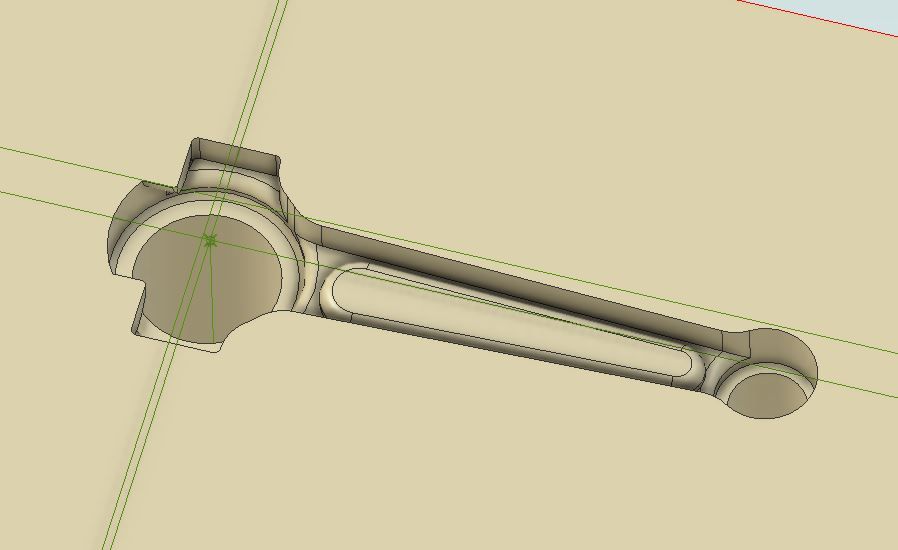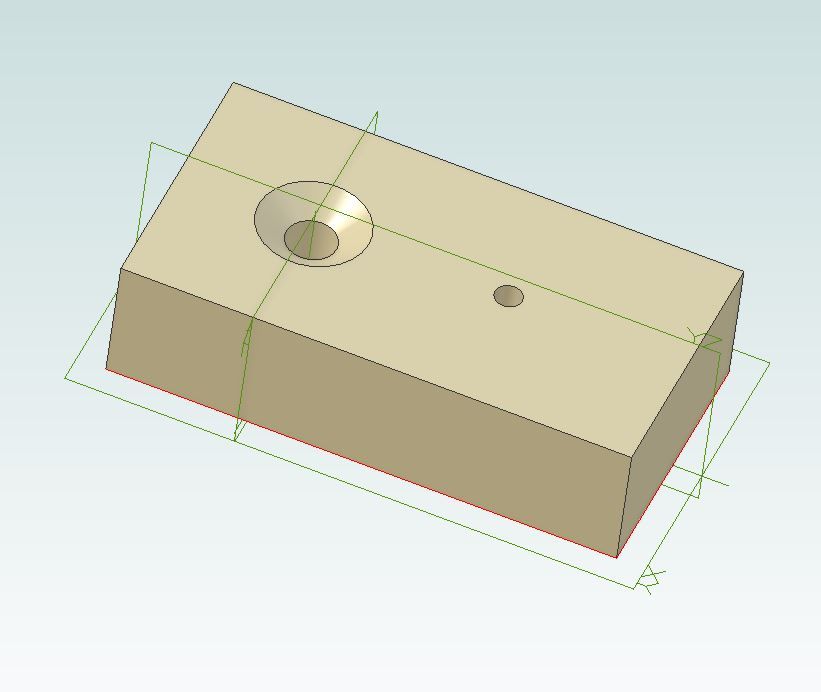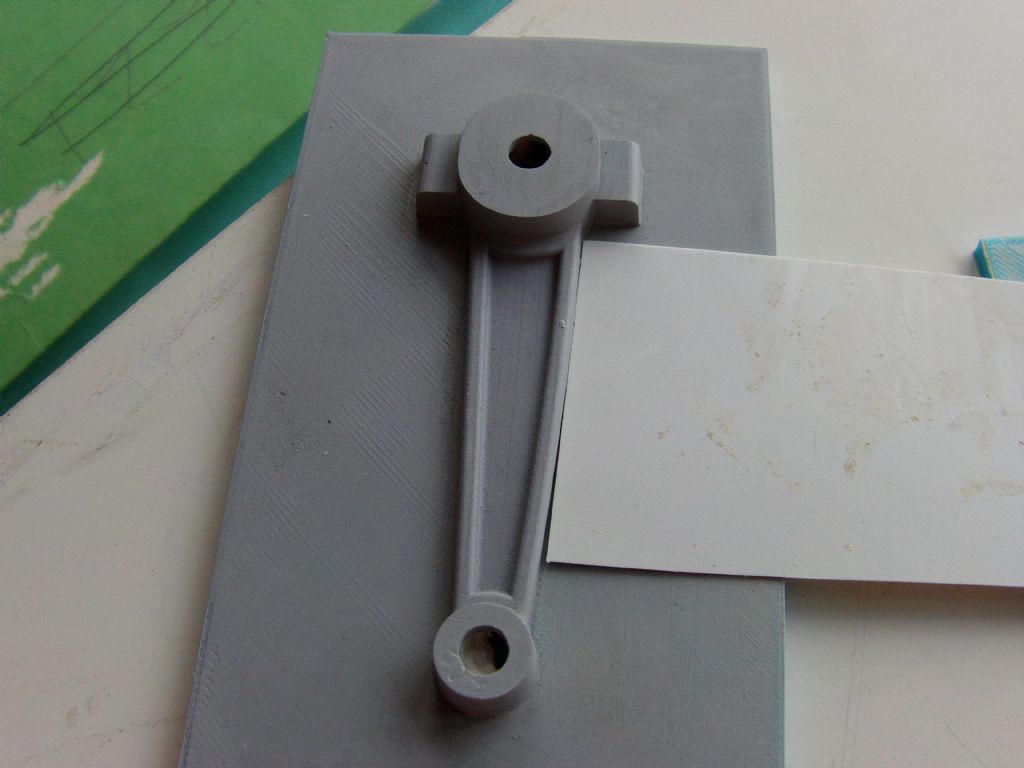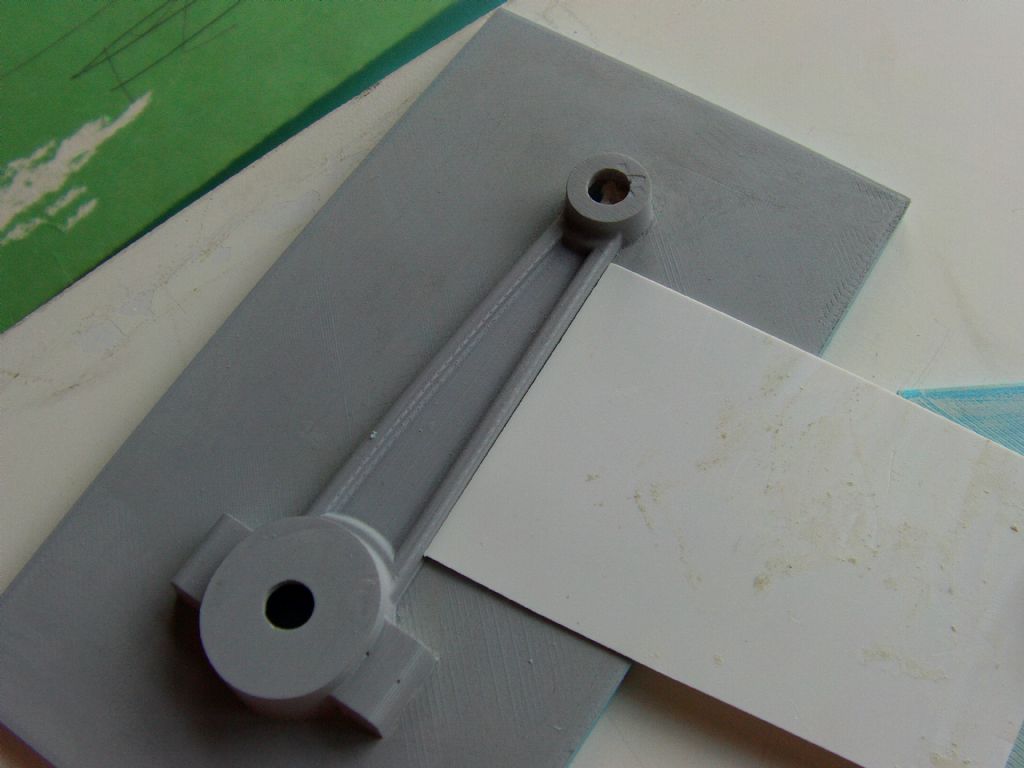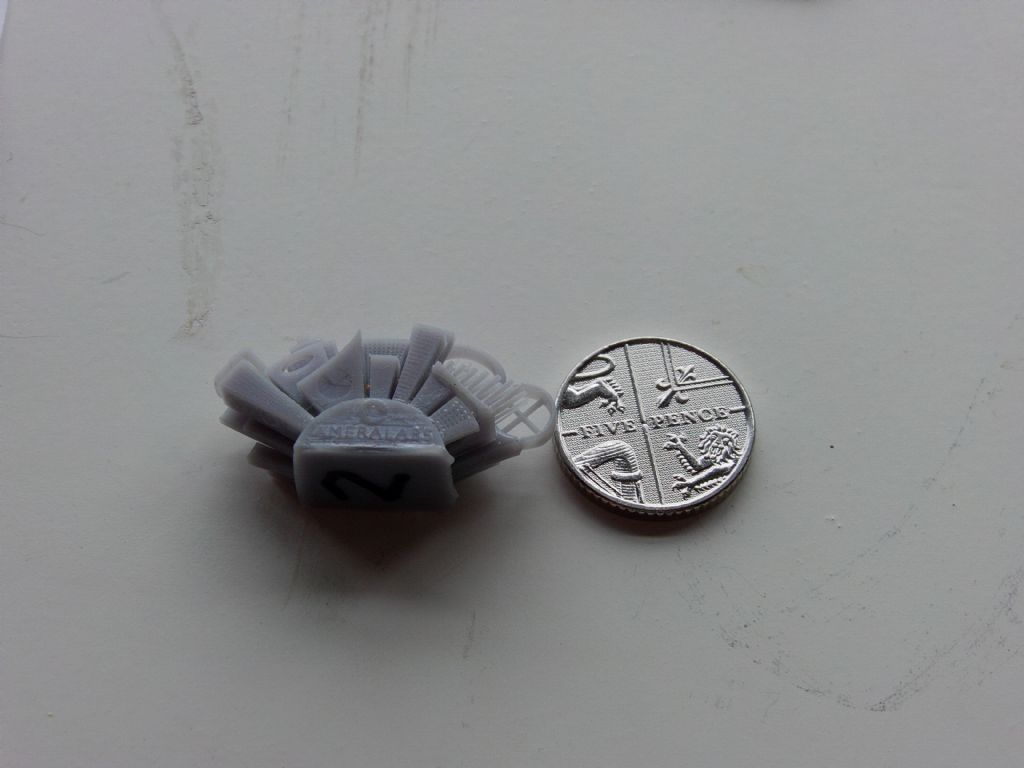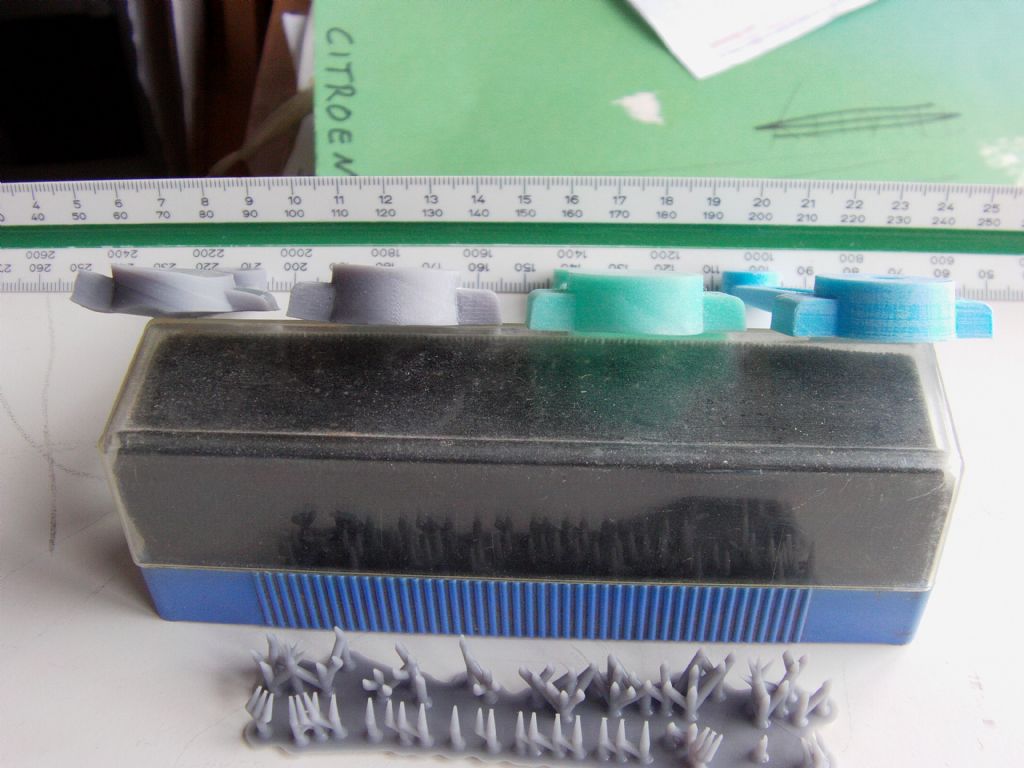A few notes on bound sand.
Resin bound sand is pretty difficult to find, and you have to use it with very dry sand (sand that has been baked to drive off the moisture, so I am told).
Sodium silicate binder is much easier to find, and does not seem to require a commercial chemical respirator like the resin binder does.
Sodium silicate sand is very sticky, and so use plenty of wax on your pattern.
I am not sure if your rod ends have draft on them, but they would probably need 3-5 degrees draft.
Sometimes you can get away with little or no draft with bound sand, especially if the pull is short.
I suspect the big end will solidify last, and so without a riser at the big end, you will have shrinkage there.
Normally any two surfaces at 90 degrees need a fillet, to get a clean pull from the sand mold.
I am not seeing any fillets, and so that could be a problem.
Many home foundry folks use the mold cavity as a runner. I consider this not an optimum method, but people do use it; it can work; and it minimizes the crucible and melt size required for a given part.
I have often heard that the gate should enter the largest part of the casting.
You could try a gate on the big end, and let it feed big end to small end.
I would slant the mold so that the small end is elevated a bit, so the mold fills up towards the small end.
I would use a small vent hole on the small end, and perhaps on the big end, with the vent hole going out the top of the mold.
Be sure to clamp or weight the mold, so hydralic pressure does not force the cope up off the drag.
A second approach would be to have a runner parallel to the rod, with a long knife gate into the thin part of the rod. This approach required more melt metal, and perhaps a larger flask, and I am not sure it would work correctly, given how big the ends are.
Good luck.
P.S. – If you use sodium silicate sand and CO2 to set it, be sure you don't over-gas the sand (5 seconds of gassing only).
P.S. 02 – I don't use a pouring basin, as they seem to aspirate air.
Sometimes I use a metal ring above the sprue, to make a pouring basin of sorts.
Keep the lip of the crucible as close to the sprue opening as possible, perhaps even letting the crucible touch the sand (don't break off the sand though). Fill the sprue as fast as possible, and keep it full during the pour, without interruption. Practice pouring water if you need to refine your technique (its not a linear thing; you pour faster at first, and then the flow slows down when the sprue is full).
Watch for when the vent holes fill up with metal, and be ready to stop pouring when you see metal come out of the vent holes.
Keep the sprue as short as possible so as to keep the metal velocity as low as possible.
.
P.S. 03 – I use a foundry cement to seal the cope to the drag, when using bound sand, to prevent runouts.
Pour temperature should be around 1,350 F (732 C).
.
Edited By PatJ on 21/08/2022 19:39:42
lee webster.


